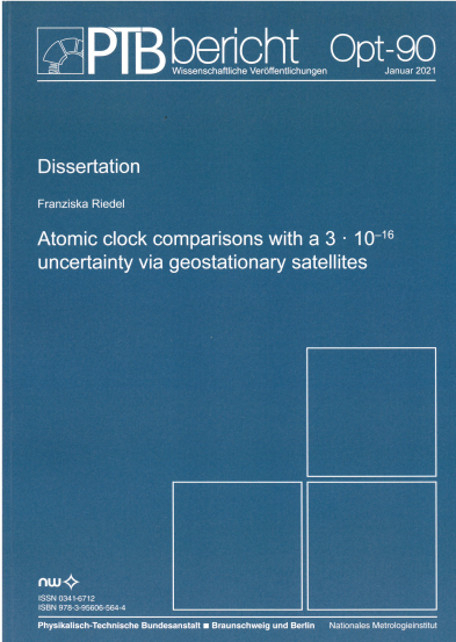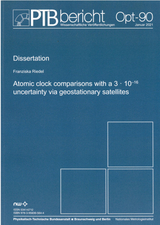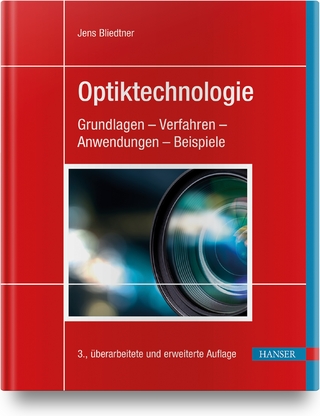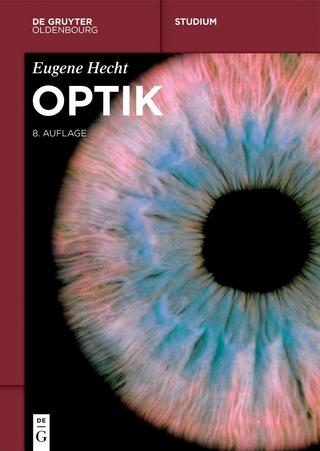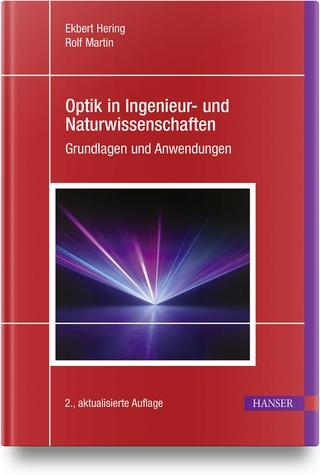Atomic clock comparisons with a 3 · 10-16 uncertainty via geostationary satellites
Seiten
2021
Fachverlag NW in Carl Ed. Schünemann KG
978-3-95606-564-4 (ISBN)
Fachverlag NW in Carl Ed. Schünemann KG
978-3-95606-564-4 (ISBN)
- Keine Verlagsinformationen verfügbar
- Artikel merken
Optical clocks are superior to all other clocks, reaching 10−18 in their uncertainty.
This makes them not only attractive for the field of fundamental research, like testing
General Relativity or examining the variance of fundamental constants, but marks
them also as potential candidates for the new definition of the second. An essential step towards that direction is the possibility to carry out comparisons of optical
clocks at remote sites to have consistency checks of clocks constructed mostly independently by different groups.
Satellite-based techniques offer the possibility of simultaneous comparisons over a
large variety of baselines. Their instability, however, has been demonstrated to be
in the low 10−15 range at 1 d averaging time for most measurements. In case of
two-way satellite time and frequency transfer (TWSTFT), the instability is limited
by the modulation bandwidth of the signal. For this work, the full bandwidth of
20 Mchip/s of the commonly used TWSTFT equipment, a SATRE modem, is employed, providing a potential improvement of a factor of 20 with respect to the currently performed TWSTFT measurements for the time scale comparisons contributing to TAI.
This technique is used in this work to compare five optical clocks and six microwave
fountain clocks located at four different European metrology institutes simultaneously over a period of 26 d. In order to prepare this measurement, extensive studies
on the SATRE modem are carried out and presented, and other aspects that need
to be taken into account for TWSTFT measurements with low instabilities are discussed, such as atmospheric delays, geometric and relativistic effects and laboratory
and roof station setups.
The link instability of TWSTFT during the measurement campaign is presented, and
compared to the instability of GPS Precise Point Positioning, that is implemented as
an additional, independent comparisons technique for the campaign.
Relative frequency differences of the optical and the fountain clocks are calculated.
For that, a processing was introduced that combines phase and frequency data of
different noise types and gaps. A respective estimator for the statistical uncertainty,
based on the correlation on the data, is established. The results of both satellitebased techniques show good agreement with each other, and also clocks based on
the same frequency transition agree within a 1-σ-uncertainty. The overall uncertainties obtained for TWSTFT are between 2.7 × 10−16 and 3.5 × 10−16 for the optical
clock comparisons. Limitations for the uncertainties of the measurements are discussed in detail, the available satellite-based techniques are evaluated with respect
to their advantages and drawbacks for similar measurements in the future.
Keywords: Frequency comparison, TWSTFT, Optical clock
This makes them not only attractive for the field of fundamental research, like testing
General Relativity or examining the variance of fundamental constants, but marks
them also as potential candidates for the new definition of the second. An essential step towards that direction is the possibility to carry out comparisons of optical
clocks at remote sites to have consistency checks of clocks constructed mostly independently by different groups.
Satellite-based techniques offer the possibility of simultaneous comparisons over a
large variety of baselines. Their instability, however, has been demonstrated to be
in the low 10−15 range at 1 d averaging time for most measurements. In case of
two-way satellite time and frequency transfer (TWSTFT), the instability is limited
by the modulation bandwidth of the signal. For this work, the full bandwidth of
20 Mchip/s of the commonly used TWSTFT equipment, a SATRE modem, is employed, providing a potential improvement of a factor of 20 with respect to the currently performed TWSTFT measurements for the time scale comparisons contributing to TAI.
This technique is used in this work to compare five optical clocks and six microwave
fountain clocks located at four different European metrology institutes simultaneously over a period of 26 d. In order to prepare this measurement, extensive studies
on the SATRE modem are carried out and presented, and other aspects that need
to be taken into account for TWSTFT measurements with low instabilities are discussed, such as atmospheric delays, geometric and relativistic effects and laboratory
and roof station setups.
The link instability of TWSTFT during the measurement campaign is presented, and
compared to the instability of GPS Precise Point Positioning, that is implemented as
an additional, independent comparisons technique for the campaign.
Relative frequency differences of the optical and the fountain clocks are calculated.
For that, a processing was introduced that combines phase and frequency data of
different noise types and gaps. A respective estimator for the statistical uncertainty,
based on the correlation on the data, is established. The results of both satellitebased techniques show good agreement with each other, and also clocks based on
the same frequency transition agree within a 1-σ-uncertainty. The overall uncertainties obtained for TWSTFT are between 2.7 × 10−16 and 3.5 × 10−16 for the optical
clock comparisons. Limitations for the uncertainties of the measurements are discussed in detail, the available satellite-based techniques are evaluated with respect
to their advantages and drawbacks for similar measurements in the future.
Keywords: Frequency comparison, TWSTFT, Optical clock
| Erscheinungsdatum | 29.06.2021 |
|---|---|
| Reihe/Serie | PTB-Berichte. Optik (Opt) ; 90 |
| Verlagsort | Bremen |
| Sprache | englisch |
| Maße | 210 x 297 mm |
| Gewicht | 470 g |
| Themenwelt | Naturwissenschaften ► Physik / Astronomie ► Optik |
| Schlagworte | clocks constructed • frequency transfer • optical clock • Optik • PTB • Satellite-based techniques • simultaneous comparisons • (TWSTFT • y satellite time |
| ISBN-10 | 3-95606-564-6 / 3956065646 |
| ISBN-13 | 978-3-95606-564-4 / 9783956065644 |
| Zustand | Neuware |
| Haben Sie eine Frage zum Produkt? |
Mehr entdecken
aus dem Bereich
aus dem Bereich
Grundlagen - Verfahren - Anwendungen - Beispiele
Buch | Hardcover (2022)
Hanser, Carl (Verlag)
49,99 €
Grundlagen und Anwendungen
Buch | Hardcover (2023)
Hanser, Carl (Verlag)
59,99 €
